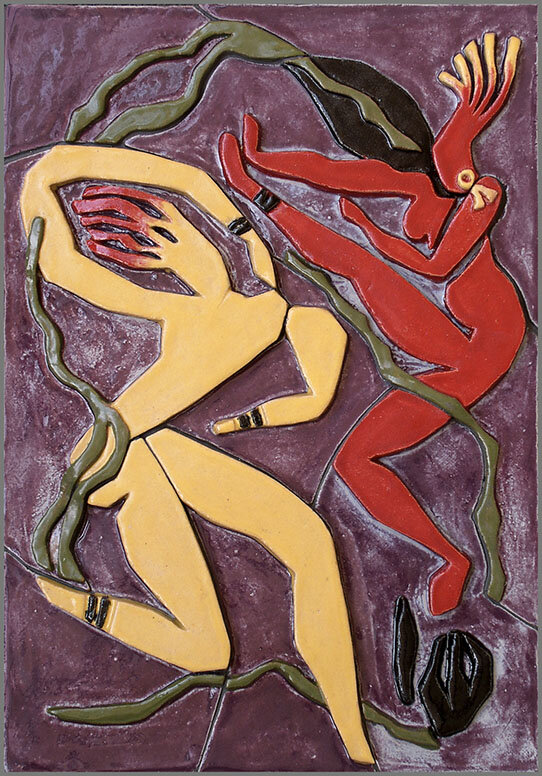Dancing Clay
How long have artists been depicting dancers? As far back as the Stone Age, about 20,000 years ago, our distant ancestors carved or drew lines of female dancers on cave walls along with animals like bison, bear and ibex. Krishna dancing with the Gopi cowherding girls has been a favorite theme of Indian sculptors and painters for many centuries, and still is. About two thousand years ago, ancient Greek vase painters engraved and painted images of women with long flowing hair dancing ecstatically with their god Dionysus.
As an artist, I have had a life-long love affair with the dance. In college art history classes, I would joyfully copy images of dancers from ancient Greek vases into my notebook. The flowing lines of the Greek figures were so beautiful, and the dancers themselves both elegant and powerful. The pleasure and effortlessness of copying those dancers made me wonder if I had been a Greek vase painter in some former life; certainly if I had a choice, that’s what I would choose to have been.
Dancing Clay is the fourth in a series of visual explorations of the dance and grew out of my “Dancing Scissors” collages. Those collages were composed of bold, brightly colored pieces of paper, which I cut directly with no pre-drawing and moved around in a very fluid way until they formed the dancers I wanted. Compared to working in clay, creating “Dancing Scissors” was like cutting pieces of air. The challenge of Dancing Clay was to keep the liveliness and animation of the dancers even in the heavy and very solid, down-to earth clay.
I used paper patterns and traced the dancers on slabs of clay. Instead of scissors, I used a sharp blade, cutting through the clay, then carefully lifting each piece, scratching its underside, adding slip, and laying it into position on the clay backing, taking care not to let the piece stretch. I then pressed the cut piece onto the backing and smoothed its sides. Once all the cut pieces were assembled on the solid clay slab, I then cut the entire tablet into several pieces, which were then bisque-fired separately in the kiln, painted with three coats of glaze, fired once again, and then reassembled.
Dancing Clay required patience and precision, with much of the work — cutting, smoothing, scraping, sanding, and glazing — a long meditation, whereas “Dancing Scissors” had relied on improvisation and spontaneity. The gift of the clay was the three-dimensionality of the bas-relief dancers who rise, casting shadows, off the surface of the background.What I love most about clay is its weighty sensuousness. I love feeling and working the cold, damp, maleable, earthy stuff with my fingertips, knowing that when it is fired, it will become hard as rock and, unlike fragile paper, last for centuries.

